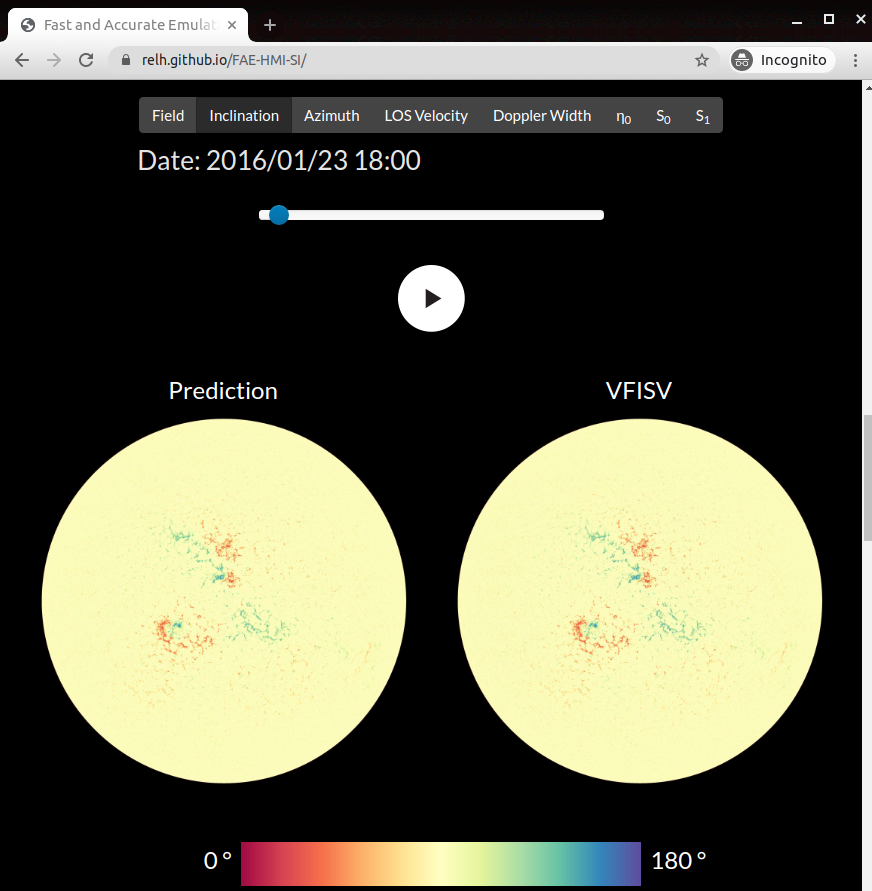Fast and Accurate Emulation of the SDO/HMI Stokes Inversion with Uncertainty Quantification
The Helioseismic and Magnetic Imager (HMI) onboard NASA's Solar Dynamics Observatory (SDO) produces estimates of the photospheric magnetic field which are a critical input to many space weather modelling and forecasting systems. The magnetogram products produced by HMI and its analysis pipeline are the result of a per-pixel optimization that estimates solar atmospheric parameters and minimizes disagreement between a synthesized and observed Stokes vector. In this paper, we introduce a deep learning-based approach that can emulate the existing HMI pipeline results two orders of magnitude faster than the current pipeline algorithms. Our system is a U-Net trained on input Stokes vectors and their accompanying optimization-based VFISV inversions. We demonstrate that our system, once trained, can produce high-fidelity estimates of the magnetic field and kinematic and thermodynamic parameters while also producing meaningful confidence intervals. We additionally show that despite penalizing only per-pixel loss terms, our system is able to faithfully reproduce known systematic oscillations in full-disk statistics produced by the pipeline. This emulation system could serve as an initialization for the full Stokes inversion or as an ultra-fast proxy inversion. This work is part of the NASA Heliophysics DRIVE Science Center (SOLSTICE) at the University of Michigan, under grant NASA 80NSSC20K0600E, and has been open sourced.
PDF Abstract

